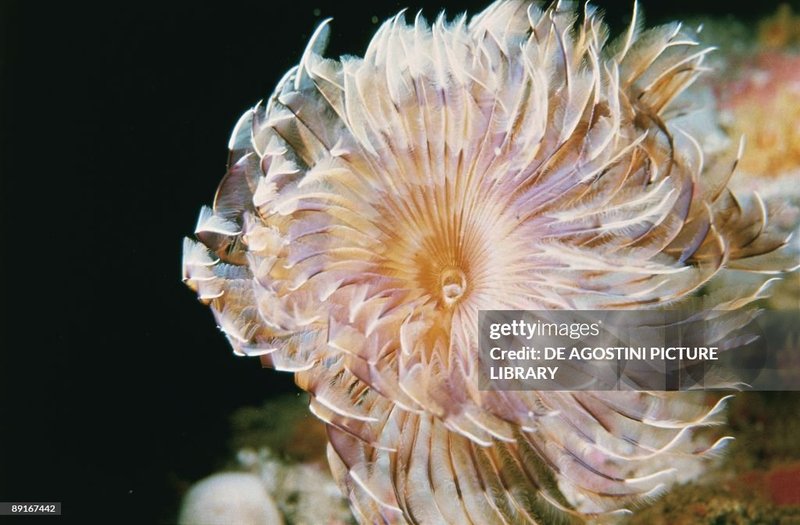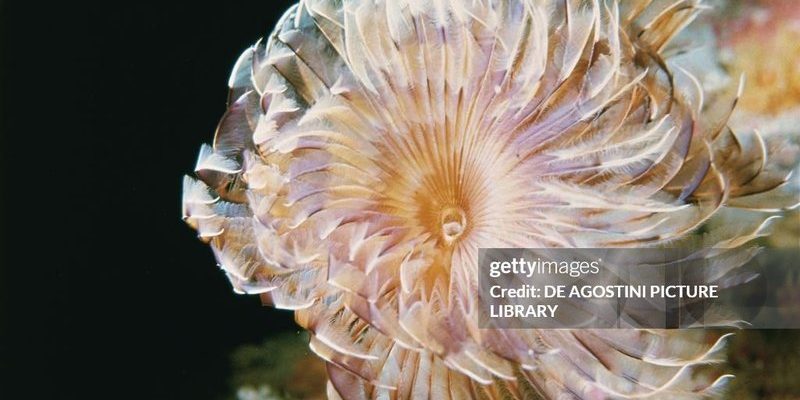
In this article, we’ll dive into the seasonal behavior patterns of Sabellid fan worms as documented in various field studies. We’ll explore how these worms adapt to their environment, the role they play in their ecosystems, and why understanding their behavior matters. Think of it as uncovering the secrets of a vibrant underwater community that’s both beautiful and essential.
The Life of Sabellid Fan Worms
Sabellid fan worms are marine polychaetes, meaning they belong to a group of segmented worms that are often found in both shallow and deeper waters. You might spot them attached to rocks, reefs, or even shipwrecks, waving their feathery fans to catch food particles in the water. These fans aren’t just for show; they serve as their feeding apparatus and gills.
In terms of appearance, they’re pretty captivating. Their fans can come in various colors, from deep reds to vibrant greens, depending on their specific environment and species. This visual appeal makes them a favorite for marine enthusiasts who enjoy observing the dynamics of ocean life. But beyond their beauty, these worms play a vital role in filtering water and maintaining healthy marine habitats.
Understanding Seasonal Changes
When we talk about seasonal behavior, we’re referring to how the fan worms change their habits throughout the year. Just like how some animals hibernate or migrate, Sabellid fan worms adjust their feeding and reproductive strategies in response to seasonal shifts.
For instance, during warmer months, the water is typically a lot richer in nutrients and food sources. This abundance prompts the worms to become more active, extending their feeding fans wider and longer to catch as much food as possible. You can almost imagine them excitedly waving their fans, ready for the feast that the summer provides.
As temperatures drop in winter, food becomes scarce. In this period, they may become less active and enter a state of dormancy. Their fans might retract, and they conserve energy, waiting for conditions to improve. This behavior is quite clever, as it allows them to survive times of hardship and maintain their population.
Feeding Patterns Throughout the Year
The feeding habits of Sabellid fan worms are influenced largely by the seasons. During peak summer months, they thrive. The warmer water leads to increased phytoplankton blooms, creating a buffet for these worms. They can usually be found swaying gently in the currents, eagerly capturing tiny food particles.
Conversely, in fall and winter, their diet essentially shifts. With fewer food particles in the water, Sabellid fan worms may rely on leftover detritus from decomposing organic material. It’s a bit like when we rummage through the fridge to make a meal out of what’s left over from last week. This adaptability showcases their resilience and resourcefulness in varying environments.
Research shows that the intensity of food availability in a given season can profoundly affect their growth and reproductive success. Studies have indicated that healthy food sources in warmer months lead to better reproductive rates, allowing the population to thrive as they head into the new year.
Reproductive Strategies and Seasonal Timing
Reproduction among Sabellid fan worms is a fascinating subject, particularly because it’s closely tied to seasonal changes. During spring and summer, when conditions are optimal, you might see these worms releasing their gametes into the water column. This timing is strategic; more food availability supports higher reproductive success rates.
Once the eggs are fertilized, the larvae will drift freely in the ocean until they find a suitable substrate to settle on, typically during the fall. This way, they avoid competition with the adults and ensure that they settle in an environment where they can thrive.
Interestingly, the timing of these reproductive events isn’t random. It’s synchronized with environmental cues, such as temperature changes and food availability. It’s as if the worms have their calendar aligned with the natural rhythms of their surroundings, ensuring their life cycles flow in harmony with the ocean’s seasonal shifts.
Ecological Importance of Seasonal Behavior
Understanding the seasonal behavior patterns of Sabellid fan worms isn’t just an academic exercise. It has real implications for marine health and conservation efforts. These worms act as natural filters for the ocean, contributing to the clarity and health of their environment. Their feeding helps regulate nutrient levels and supports a balanced ecosystem.
Moreover, monitoring changes in their behavior can serve as an indicator of broader ecological changes. If these worms struggle due to climate change, pollution, or other factors, it might signal a larger issue impacting the marine environment. By paying attention to them, researchers can gain insights into the health of coastal ecosystems.
In areas where Sabellid fan worms thrive, you’ll often find a greater diversity of marine life. Their habitats provide shelter and food for other organisms, showcasing the interconnectedness of the ocean’s inhabitants. When one species flourishes, the entire ecosystem can benefit.
Field Study Insights and Observations
Field studies focused on Sabellid fan worms have brought valuable insights into their seasonal behaviors. In various research projects, scientists have documented how changes in sea temperature and nutrient levels directly influence their activities. For example, some studies have shown that shifts in climate can lead to earlier breeding seasons, which can affect population dynamics.
Additionally, researchers often use these studies to observe the worms’ responses to human-induced changes in the marine environment, such as pollution or habitat destruction. The findings highlight the importance of protecting marine habitats to ensure the survival of these and other species.
Data gathered from these field studies helps policymakers make informed decisions about marine conservation efforts. By prioritizing the health of ecosystems where Sabellid fan worms thrive, we can ensure that a diverse range of marine life continues to flourish.
The seasonal behavior patterns of Sabellid fan worms offer us a fascinating glimpse into the complex world beneath the waves. From their feeding habits and reproductive strategies to their ecological importance, these worms play a critical role in maintaining the health of marine environments.
By understanding their behavior and the way it’s influenced by seasonal changes, we can better appreciate the interconnectedness of ocean life. Observing the ebb and flow of these creatures not only enriches our knowledge but also underscores the need for conservation efforts to protect our precious marine ecosystems.
So, the next time you think about the beauty of the ocean, remember the humble Sabellid fan worm. They may be small and often overlooked, but they’re essential players in the grand theater of marine life.

